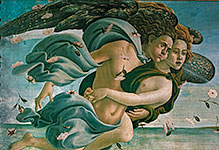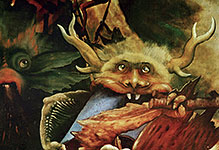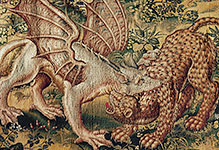
Mythology
Mythology

#03050426
Fragment of a wallpainting: God with flowers and two nymphs End of the 1st ce...

#03050436
Theseus and Minotaur Roman mosaic

#03050437
Achilles returning Briseis to Agamemnon Detail of a fresco from the House of th...

#03050440
Ulysses and the Sirens: the Greek hero Ulysses, sailing by the rock of the Siren...

#03050452
The Great Dish from the Mildenhall treasure, Roman Britain, 4th century. The sta...

#03050454
Flanged silver bowl and cover from the Mildenhall treasure, Roman Britain, 3rd-4...

#03050457
Flanged silver bowl from the Mildenhall treasure, Roman Britain, 4th century AD....

#03050460
Gold belt buckle fom the ship-burial at Sutton Hoo, Suffolk, early 7th century....

#030506 1
Attic red-figured oenochoe showing Amazon women; end of the 5th century BCE.

#030506 2
Attic red-figured krater with scene of the killing of Leukippos, the lover of Da...

#030506 3
Attic red-figured krater with depiction of the battle of Giants against Gods; 5t...

#030506 4
Attic red-figured krater showing Orestes and Iphigenia at the temple of Artemis;...

